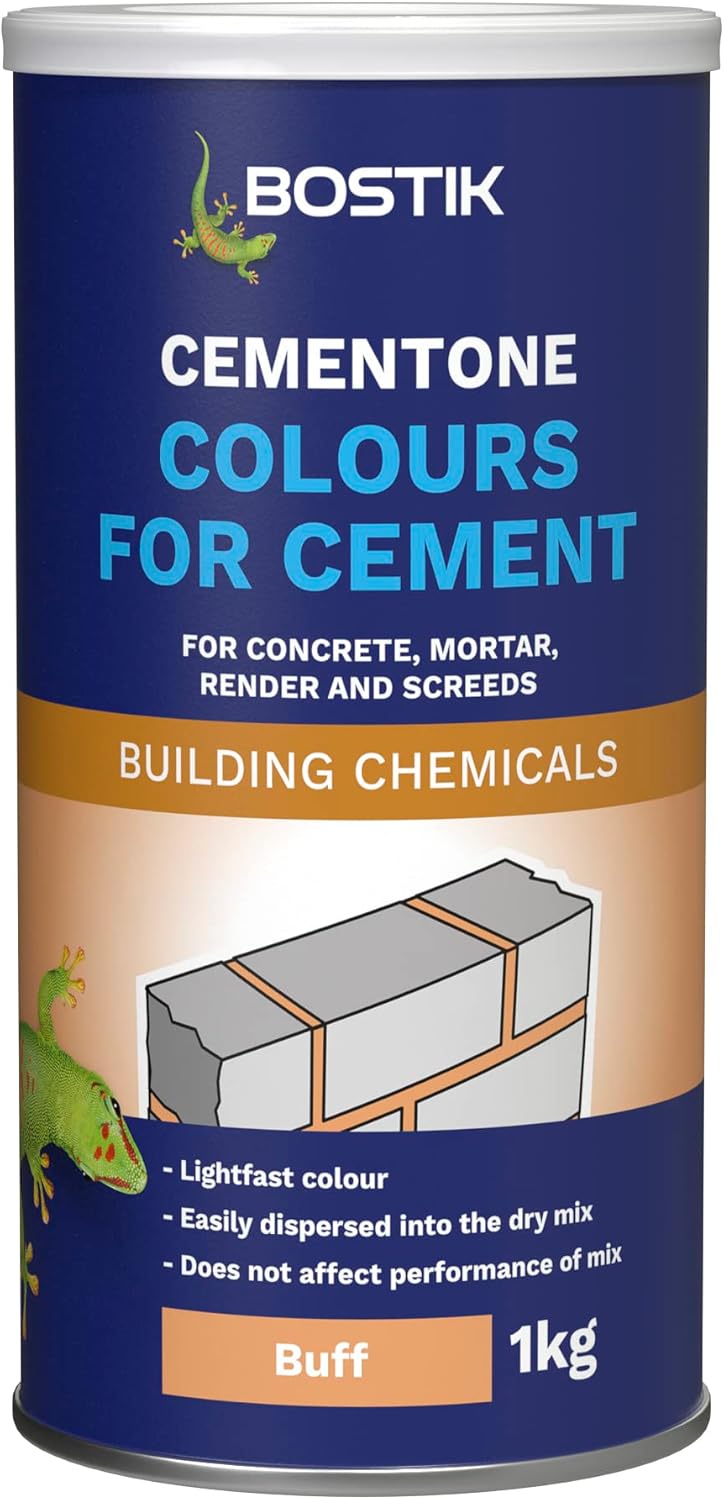
Bostik Colours for Cement, For Concrete, Mortar, Render and Screeds, Available in 5 Intermixable Colours, For Interior and Exterior Use, Colour: Buff, Size: 1kg
FREE Shipping
Bostik Colours for Cement, For Concrete, Mortar, Render and Screeds, Available in 5 Intermixable Colours, For Interior and Exterior Use, Colour: Buff, Size: 1kg
- Brand: Unbranded

Description
As with finding an existing mix ratio, quite a bit of experimentation is needed to get a good match. One thing to be aware of is that it is important to mix the dye into the cement before you add the water.
The next most significant component of a mortar mix is the cement. Unless the existing mortar is particularly light in colour (light cream or white colour), in most cases a standard cement will have been used e.g. grey cement. They are available in a huge range of different shades and colours and can be used to change the colour of a mortar mix to match any given existing mortar or surface.While waiting for your test mixes to dry you can still do some preliminary tests by giving a section of your existing mortar a good soaking with some water. This should then reflect the damp drying state of your test mixes Now that you know exactly how to create some test mixes and compare to your existing mortar to find a colour match, it’s now just a question of getting it done, but before you make a start there are a few further points to be aware of: Another factor that can alter the colour of mortar is whether lime was used in the original mix. As lime is naturally light in colour and is often used in place of cement in some mixes, mortar created using lime can look very light in colour and in some cases be nearly white.
Once dried, simply hold your sample board up to the existing mortar and look along the line until you spot a close or identical colour match and this will indicate the mix ratio to go for. Firstly, get a couple of samples of mortar. If the joints that you’re looking to repair are particularly damaged then you should be able to prise some chunks of old mortar out. If you know the age of your property and its pre-1900’ish then the chances are it may feature a lime-based mortar, especially if it is light in colour.
Matching mortar colours is often required with older, period properties where repairs that are carried out need to be made invisible. The next part is a waiting game! You will need to leave the solution for 2-3 days for the Muratic Acid to get to work on the on the cement and dissolve it (and also any lime that may also be present). Now that we have established the probable types of sand and cement or lime that was used for the original mortar mix, all that remains is to match the correct cement content. Once your new mortar has dried it will change colour very slightly. This may be even more evident over a large area
If it helps, I am looking for the sandy colour that this chap was able to get in his "this is how it turned out" picture (but funnily enough he wanted more grey!): When it comes to lime, traditionally, this would have been used in place of cement as it does exactly the same job e.g. binds materials together, but it also has the added benefit of making a mortar mix breathable and more flexible. Our selection of cement additives and cement dye can help you to achieve the best results in your latest construction projects. Additives can help assist or enhance the properties of the mortar or cement mix depending on the desired outcome or the job requirements. We offer a great range of plasticisers, accelerators, retarders, water proofers and frost proofers, colourers and much more. What concrete additives and mortar additives do we have available? As we have mentioned, as the sand used in a mix makes up the bulk of the actual mix itself, it has the greatest effect on the overall colour, so to get a good match, it’s really essential to identify it. Final specifications?If further advice is required, one of our Mortar Specialists can visit with our Mortar Colour Selector to assist in finding an appropriate match. Call our Mortar Helpline on 0800 667 827 for more details.As the name suggests, muriatic acid is in fact hydrochloric acid which is very dangerous. At all times during this experiment you should wear old clothes, chemical resistant gloves made from PVC or Butyl rubber and at minimum eye protection, preferably full facial protection. Even a small trace of dye can have quite a dramatic effect on the overall colour so you will need to experiment using quite small quantities at a time. Don’t be tempted to use anything too heavy or blunt for this. If you get too carried away you will grind the actual sand particles down too much and have nothing to compare other than a pile of dust. Step 3 – Mix Muriatic Acid Solution Now, pour your sand solution gently over the top. The tights will act as a sieve, allowing the remaining water/acid solution to drain off, leaving you with just your sand. I wonder if I need a different cement, to include lime not snowcrete, a different colour sand? If anyone can help I'd be grateful.
- Fruugo ID: 258392218-563234582
- EAN: 764486781913
-
Sold by: Fruugo
